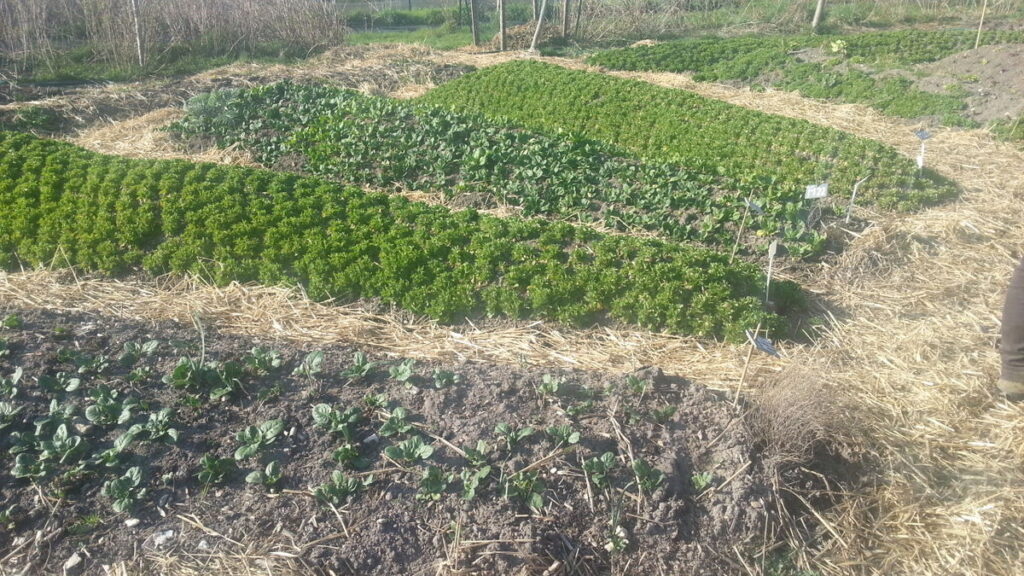Gardening enthusiasts and professionals alike often seek methods that are not only efficient but also sustainable and environmentally friendly. The Ruth Stout gardening method, also known as no-till gardening, is one such approach that has gained considerable attention over the years. Rooted in simplicity and practicality, this method eliminates the need for traditional tilling, making gardening more accessible and less labor-intensive. This article will delve into the intricacies of the Ruth Stout gardening method, exploring its origins, principles, benefits, and practical applications.
Origins of the Ruth Stout Gardening Method
The Ruth Stout method was developed by Ruth Stout, a pioneer in organic gardening who believed in a more natural and effortless approach to cultivating the land. Born in 1884, Ruth Stout began experimenting with gardening techniques in the 1940s. Frustrated with the time-consuming and laborious process of tilling the soil, she sought an alternative that would allow her to garden with minimal physical effort. Her solution was simple: cover the garden bed with a thick layer of organic mulch and let nature take its course.
Ruth Stout’s philosophy was based on the idea that soil, when left undisturbed and covered with organic matter, would naturally maintain its fertility and structure. This approach not only saved time and effort but also contributed to healthier, more resilient plants. Over the years, her method gained popularity, and today, it is recognized as one of the most effective ways to garden organically.
Core Principles of the Ruth Stout Gardening Method
The Ruth Stout method is based on a few key principles that make it both effective and easy to implement:
1. No-Till Gardening
At the heart of the Ruth Stout method is the concept of no-till gardening. Unlike traditional gardening methods that involve tilling or turning the soil to prepare it for planting, the Ruth Stout method advocates for leaving the soil undisturbed. Tilling can disrupt the natural structure of the soil, leading to erosion, loss of nutrients, and the destruction of beneficial microorganisms. By avoiding tilling, the soil retains its natural structure, promoting better water retention and aeration.
2. Mulching
Mulching is a central component of the Ruth Stout method. The practice involves covering the garden bed with a thick layer of organic material, such as straw, hay, leaves, or compost. This mulch layer serves multiple purposes: it suppresses weeds, retains moisture, and gradually decomposes to enrich the soil with nutrients. Ruth Stout recommended applying mulch year-round, replenishing it as needed to maintain a consistent layer. Over time, the mulch breaks down and becomes part of the soil, further enhancing its fertility.
3. Minimal Maintenance
One of the most appealing aspects of the Ruth Stout method is its low-maintenance nature. By eliminating the need for tilling, weeding, and frequent watering, this method significantly reduces the amount of time and effort required to maintain a garden. The thick mulch layer naturally suppresses weeds, meaning there is little need for manual weeding. Additionally, the mulch helps retain moisture in the soil, reducing the need for frequent watering. This makes the Ruth Stout method ideal for busy gardeners or those with physical limitations.
4. Natural Soil Fertility
The Ruth Stout method emphasizes the importance of maintaining natural soil fertility. By allowing organic matter to decompose naturally, the soil is continuously enriched with nutrients, reducing or eliminating the need for chemical fertilizers. This not only benefits the plants but also supports a healthy ecosystem within the garden. Beneficial insects, earthworms, and microorganisms thrive in undisturbed soil, contributing to a balanced and sustainable garden environment.

Benefits of the Ruth Stout Gardening Method
The Ruth Stout gardening method offers numerous benefits, making it an attractive option for gardeners of all experience levels. Here are some of the key advantages:
1. Labor Savings
One of the most significant benefits of the Ruth Stout method is the reduction in physical labor. Tilling, weeding, and watering are some of the most time-consuming and strenuous tasks in traditional gardening. By eliminating or minimizing these activities, the Ruth Stout method allows gardeners to spend less time working in the garden and more time enjoying the fruits of their labor.
2. Weed Control
Weeds are a common challenge in any garden, but the Ruth Stout method offers an effective solution. The thick mulch layer acts as a natural weed barrier, preventing weeds from taking root and competing with your plants for nutrients. While some weeds may still appear, they are usually much easier to manage with this method.
3. Water Conservation
In an era where water conservation is increasingly important, the Ruth Stout method provides a sustainable solution. The mulch layer helps retain moisture in the soil, reducing the need for frequent watering. This not only conserves water but also ensures that your plants have a consistent supply of moisture, leading to healthier growth.
4. Improved Soil Health
Healthy soil is the foundation of a successful garden, and the Ruth Stout method promotes soil health in several ways. By avoiding tilling, the soil structure remains intact, which improves water infiltration and root development. The continuous addition of organic matter through mulching also enhances soil fertility and encourages a thriving ecosystem of beneficial organisms.
5. Sustainability
The Ruth Stout method is inherently sustainable. By relying on natural processes and avoiding chemical inputs, this method supports a healthy and balanced garden ecosystem. It also reduces the need for external resources, such as fertilizers and water, making it an environmentally friendly choice.

Implementing the Ruth Stout Gardening Method
Implementing the Ruth Stout gardening method is straightforward and can be adapted to various gardening situations. Here are the steps to get started:
1. Prepare the Garden Bed
Begin by selecting a suitable location for your garden bed. The Ruth Stout method works well in both traditional in-ground gardens and raised beds. If you are starting with an existing garden bed, there is no need to till the soil. Simply clear away any large weeds or debris and level the surface.
2. Apply Mulch
Next, apply a thick layer of organic mulch to the garden bed. Ruth Stout recommended a layer of at least 8 inches thick. Suitable materials include straw, hay, leaves, or compost. The mulch should cover the entire surface of the bed, leaving no bare soil exposed. As the mulch decomposes over time, it will need to be replenished to maintain a consistent layer.
3. Planting
When it’s time to plant, simply create a small hole or trench in the mulch layer, insert your seeds or seedlings, and cover them with soil and mulch. The mulch will protect the young plants and help retain moisture as they establish themselves. For larger plants, such as tomatoes or peppers, you may need to create a larger planting hole or clear a small area of mulch around the base of the plant.
4. Maintain the Garden
Once your garden is established, maintenance is minimal. Continue to add mulch as needed to keep the layer thick and consistent. Watering should be done as necessary, but you will likely find that the need for watering is greatly reduced. Keep an eye out for any weeds that may appear and remove them promptly.
5. Harvesting
As your plants grow and mature, you can enjoy the benefits of a productive and low-maintenance garden. Harvesting is the final reward for your efforts, and with the Ruth Stout method, you can expect healthy, vibrant plants that produce abundant yields.
Conclusion
The Ruth Stout gardening method offers a simple yet highly effective approach to gardening that aligns with the principles of sustainability and natural farming. By embracing no-till gardening, mulching, and minimal maintenance, this method allows gardeners to achieve impressive results with less effort and fewer resources. Whether you are a seasoned gardener or just starting out, the Ruth Stout method provides a practical and rewarding way to grow a thriving garden.



